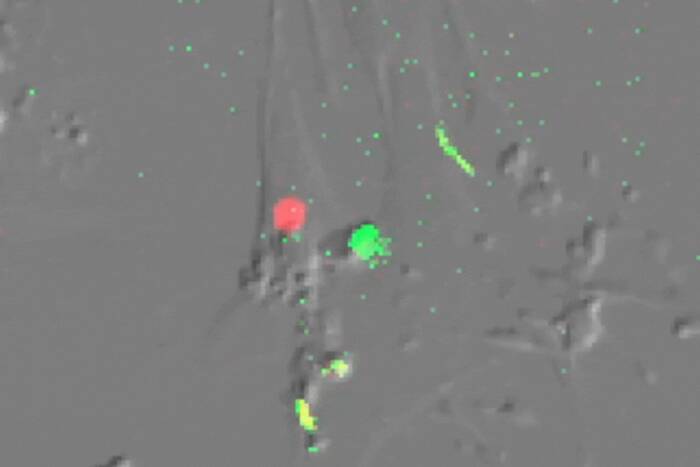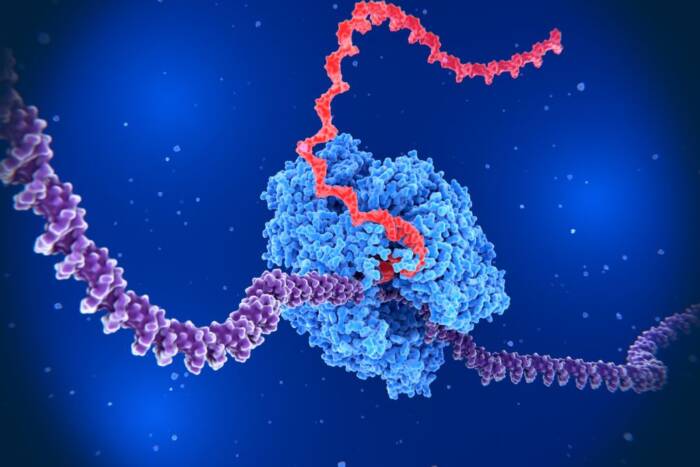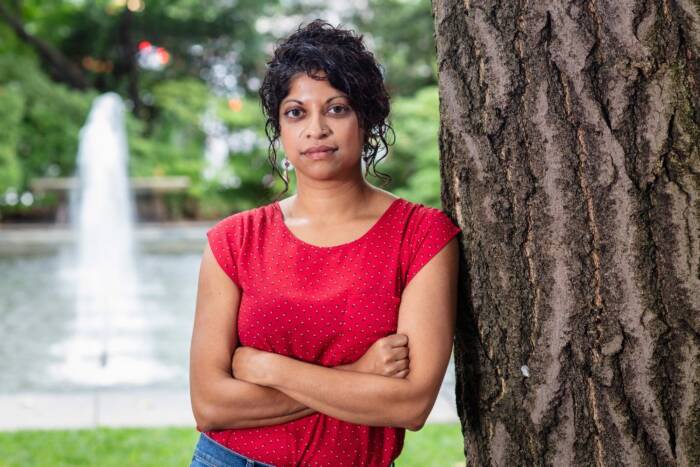A natural approach for HIV vaccine
For 25 years, researchers have tried and failed to develop an HIV vaccine that will generate antibodies to kill the virus before it takes hold. Only four “super antibodies” have been discovered that might do the job, but they have proved impossible to induce in people so far. Now, in research published online March 15 by Nature, scientists at The Rockefeller University have laid out a new approach. They have identified a diverse team of antibodies in “slow-progressing” HIV patients whose coordinated pack hunting knocks down the virus just as well as their super-antibody cousins fighting solo.
By showcasing the dynamic, natural immune response in these exceptional patients, the research, led by Michel C. Nussenzweig, Sherman Fairchild Professor and head of the Laboratory of Molecular Immunology, suggests that an effective HIV vaccine may come from a shotgun approach targeting several parts of the virus rather than a magic bullet targeting only one.
“We wanted to try something different, so we tried to reproduce what’s in the patient. And what’s in the patient is many different antibodies that individually have limited neutralizing abilities but together are quite powerful,” says Nussenzweig, who is also a Howard Hughes Medical Institute investigator. “This should make people think about what an effective vaccine should look like.”
HIV strains mutate rapidly, making them especially wily adversaries of the immune system. In particular, the surface protein of HIV, gp140, is the site of a host of mutations that obstruct the few elements that all of the virus strains share. Prior research has shown that only four super antibodies block the activity of that protein in a broad range of HIV strains, neutralizing the virus. But all attempts to coax the human body into producing those four have failed so far.
So Johannes Scheid, a doctoral student in Nussenzweig’s lab, turned his attention to the antibodies produced by six people infected with HIV whose immune systems put up an exceptionally strong fight. The patients represent the roughly 10 to 20 percent of HIV patients whose antibodies are able to kill not only their own virus but a wide range of HIV strains. Somehow, their immune systems’ B cells produce high levels of antivirus antibodies, but until now, researchers have known little about the antibodies or how effective they are.
With help from Rockefeller’s Center for Clinical and Translational Science and Rockefeller scientists David D. Ho andJeffrey V. Ravetch, Scheid and colleagues isolated 433 B cells from these individuals’ blood that specifically target the envelope protein — HIV’s protean armor. They then extracted the DNA encoding the B cells’ antibodies and cloned large amounts of them, mapped which part of the envelope protein each targeted and gauged how effective each was in neutralizing the virus. In the process, the team identified a new part of the core of the envelope protein that had never been recognized as a potential target for antibodies.
Scheid’s work shows that it’s common for these antibodies to have neutralizing activity, says Nussenzweig. But each antibody alone has limited ability to fight the virus. “Individually, they’re not as strong as the Famous Four,” says Nussenzweig, referring to the high-profile super antibodies on which several vaccine attempts have been based. But in high concentrations, a combination of the sets of antibodies cloned from the individual patients seemed to act as teams to knock down the virus in cell culture as well as any single antibody studied to date. These natural antibodies were also able to recognize a range of HIV strains suggesting that research into vaccines that mimic this natural antibody response could pay off.
 (opens in new window) (opens in new window) |
Nature online: March 15, 2009 Broad diversity of neutralizing antibodies isolated from memory B cells in HIV-infected individuals(opens in new window) Johannes F. Scheid, Hugo Mouquet, Niklas Feldhahn, Michael S. Seaman, Klara Velinzon, John Pietzsch, Rene G. Ott, Robert M. Anthony, Henry Zebroski, Arlene Hurley, Adhuna Phogat, Bimal Chakrabarti, Yuxing Li, Mark Connors, Florencia Pereyra, Bruce D. Walker, Hedda Wardemann, David Ho, Richard T. Wyatt, John R. Mascola, Jeffrey V. Ravetch and Michel C. Nussenzweig |


